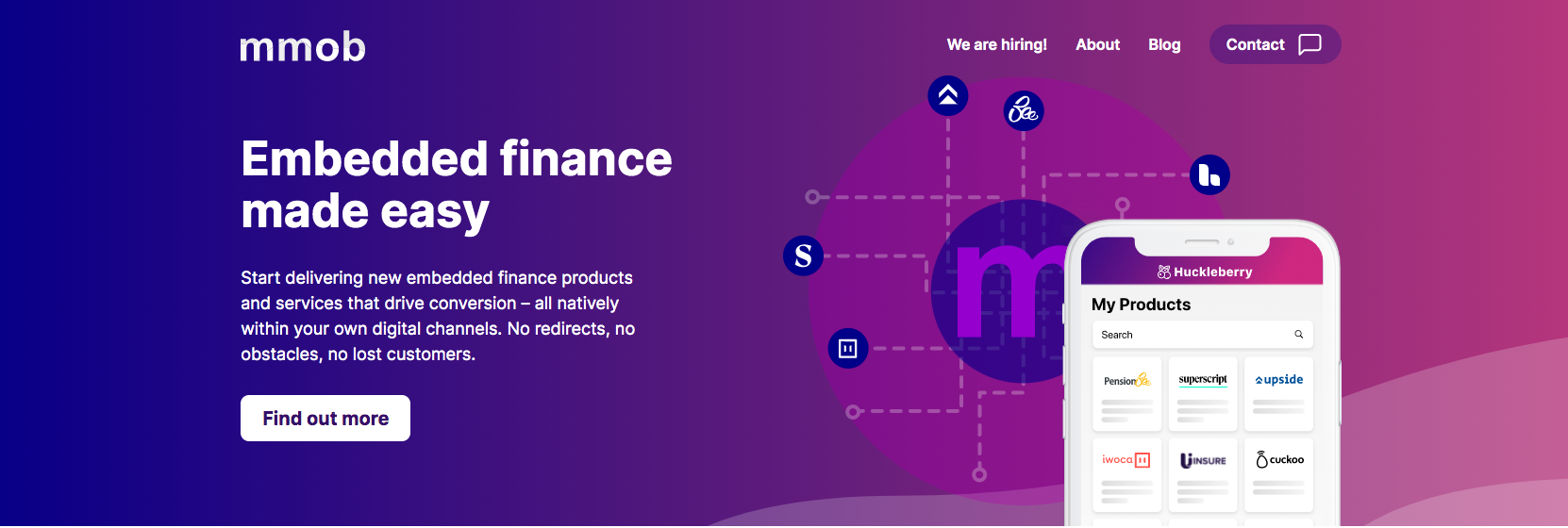

A Finovate alum since 2014, CuneXus specializes in enabling lenders to deliver personalized, mobile customer experiences while helping financial institutions grow loan volume and revenue. The company has reached more than $60 million in loans funded daily, $500 billion in client combined assets, and represented 28 million consumers in the U.S.
Last fall, the company announced the launch of its new credit and identity protection monitoring solution. The technology enables credit union members to both optimize their financial picture as well as monitor their accounts for any fraudulent activity from within the credit union’s dashboard.
We caught up with Barry Kirby, CuneXus SVP to talk about the company’s new offering and the CuneXus’ broader commitment to financial wellness.
Can you tell us a little about the decision to launch this new credit monitoring solution. Why this and why now?
The reality is that the entire banking system is backwards. Meaning this is the only industry where consumers do the heavy lifting, like applying for credit, only to be told 70% of the time that they can’t buy the product. This results in a dissatisfied customer who will most likely look elsewhere.
Moving forward, it is crucial that financial institutions strategize a new method of engaging with their customers and members through personalized offers that match their needs, especially as spending continues to return to normal. To remain a central role in their communities and the main line of financial support for their customers, financial institutions must implement a business model that promotes the importance of financial awareness and delivers customers next level services and products best suited for their lifestyle.
At CuneXus, we are dedicated to helping banks and credit unions achieve this through our first-to-market digital storefront for account holders, addressing the need for a personalized, on-demand banking experience. This storefront is empowering banks and credit unions to provide a new level of support to their customers and members, by eliminating the loan application process and offering the convenience and immediacy that they expect.
Our new real time credit monitoring solution, which is embedded within the CuneXus storefront, allows us to enter the financial wellness market and elevate the customer experience. We have traditionally provided unparalleled transparency into consumers’ borrowing power through a perpetual pre-approval process. This new product, which provides a transparent view into credit health, is a natural addition to the CuneXus storefront.
What are some of the unique aspects of CuneXus’ new tool?
Our credit monitoring solution has the ability to pull credit information from all the three credit bureaus. Our tool gives financial institutions the option to display information from any of the three bureaus (their bureau of choice), or they can opt to provide their account holders with scores from all three bureaus. This gives the consumer the ability to monitor and compare, and gives the financial institution the flexibility to provide consumers with the best loan options and highest approval odds.
Unlike other credit monitoring solutions on the market that encourage more debt, this new solution helps consumers make informed financial decisions for their futures. The CuneXus storefront is not on a mission to solicit more debt, but rather to offer an array of viable options that the consumer can choose from in their moment of need. Now, with the help of simulators, this new tool can offer account holders suggestions and advice based on their real time credit scores, empowering them to better understand their financial standings. This education component is crucial. Our well-rounded tool balances between education and offering account holders access to credit, to ensure they make the best next move for their future.
How does the new tool give users more control over and visibility into their financial health?
Imagine logging onto online banking and a loan offer with a personalized note pops up explaining how to improve your credit; or it offers details on how boosting your score by 50 points may lead to an even better rate. Financial institutions have a timely and unique opportunity here to step in and help their communities by providing alternative credit options or displaying suggestions for future financial decisions based on each individual’s real time, credit rating. This is exactly what our new tool does – displaying tailored advice and personalized suggestions based on internal data paired with real time credit scores. Account holders can view these relevant offers and advice as soon as they log onto their account and decide their next step on their own. This allows lenders to give end-users more control and visibility over their financial health and elevate consumer confidence, transparency, and awareness to new levels.
What is the advantage of providing multi-bureau information and credit scores as this solution does?
Financial institutions have the ability to either display credit scores from all or one credit bureau. However, those who choose to display more than one, give consumers the ability to monitor and compare their credit ratings and enables financial institutions to offer them the best loan options and highest approval odds. The ability to view all of this information right inside the digital storefront provides financial institutions’ account holders with a more consistent and seamless digital experience, eliminates the need to monitor them elsewhere, and empowers them to track their financial wellbeing over a period of time with ongoing transparency – all which ultimately helps them optimize their financial picture.
It’s been reported that the new solution serves as an identity theft alert system, as well. How is this so?
This credit monitoring tool has the ability to automatically identify any adjustments or changes that have been made to an account holder’s credit score, alerts the user, and automatically suggests steps to correct issues. This capability can also act as a fraud examiner by monitoring any fraudulent activity and alerting both the financial institution and customer.
The credit monitoring tool was introduced last fall. What has the response been since the launch?
We announced that we were building this tool last fall. However, it just hit the market this spring. We have financial institutions on the waitlist to launch and would be happy to offer a follow up story with any measurable benefits/results after they have gone live.
Will we see more from CuneXus on the financial wellness front going forward?
Absolutely. CuneXus makes banking simple, enabling consumers to more easily interact and transact with their institutions through digital channels. As part of our ongoing commitment to helping banks and credit unions navigate an increasingly complex and changing landscape, we recently made a few additional strategic investments in partnerships that will help these financial institutions also understand where and how financial wellness can and should fit into their digital strategy.
Recently we teamed up with Equifax to offer CuneXus credit union customers a better view of their members’ financial wellness and help ensure they are receiving the most relevant offers in a timely and effective manner. The CuneXus platform will leverage insights and predictive analytics that ‘Only Equifax’ can provide in the pre-screen and segmentation phases of the loan process, empowering credit unions to understand more intimately their account holders’ financial standing and create a new level of consumer transparency and awareness.
Another example of this is our new partnership we just announced with Zest AI, the leader in software for more inclusive underwriting. By leveraging Zest AI’s fair credit scoring model within the CuneXus platform, credit unions and banks will be able to extend firm offers of credit to more members than ever before, especially those who are often overlooked by legacy credit scoring. This enables a more inclusive underwriting process, improves consumer access to affordable lines of credit, and helps consumers on the lower credit spectrum build healthier credit scores, improving their long-term financial wellness.
Photo by Karolina Grabowska from Pexels


















